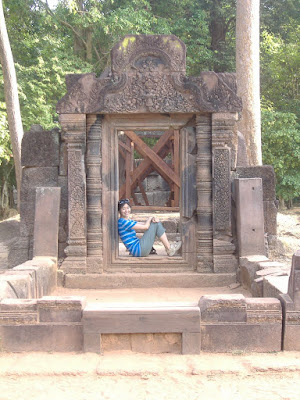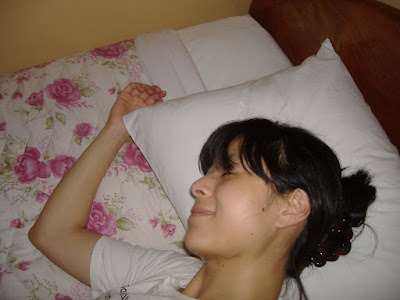
Today (Saturday) is a fairly slow day with nothing to report, since the only thing I’ve got going is my voyage up to Phnom Penh to visit the sprawling Wat Mahamontrey. But this lack of activity is fine with me. Yesterday’s experiences were powerful and moving enough for me to warrant some reflection time, so I was only too happy to have some down time during my travels to sit back and think.
Shortly following the charged M&M conference yesterday, I skedaddled back to the guesthouse to grab a sandwich and then proceeded to head to the Home Care office. There, I was greeted by a small team comprising a driver, a nurse…and a comically-huge SUV. The nurse greeted me apprehensively, though his demeanor quickly changed after he learned that I was a medical student. “Great..you can help out a lot,” he exclaimed, perhaps a little too enthusiastically, “Just do all the physical exams and write notes!”
So the three of us (with our extraordinarily large vehicle) left the comfortable confines of AHC for the dusty, undeveloped roads of rural Siem Riep. We drove for maybe twenty minutes before we turned off the main road to our first village. After that, we clunked and clamored down a series of unpaved gravel roads that make my stomach churn just thinking about it. I am not sure how our driver knew where the patients’ houses (or huts, to be more accurate) were located, but suffice to say, we made it to our first stop in one piece.
Here’s a picture of the first patient we saw, who is a 13-year old patient with asymptomatic HIV disease. She is the girl in the very left, dressed in a white blouse and navy blue skirt.

First off, can anyone believe she is 13 years old? I certainly couldn’t believe it. And when I was able to fully examine her, I was convinced that she was probably the developmental equivalent of an American 8-year old. She was so thin and emaciated, it pained me to even look at her. Yet, she managed to look back at me with her charming big brown eyes and converse with me in my funny-sounding Khmer. Her smile was truly infectious. Fortunately, the ARV medication had been keeping her HIV in check for years, and at present she didn’t have any acute issues.
The second patient I saw, pictured below, was previously admitted to the hospital for dehydration but was now being followed for malnutrition issues.

I’m not sure what exactly happened to him during his hospital stay, but whatever it was, It made him deathly afraid of doctors. It took me much longer than usual to examine him, but in general, he appeared to be growing well and in overall good health. He did have a spreading skin infection from what looked like a small abrasion. The nurse with me told me the only antibiotics he had on hand were Cirpofloxacin and Amoxicillin. I felt really compelled to give him some form of medication, seeing as the wound was clearly infected, so we left him with a five day supply of Amoxicillin as well as strict instructions to go to an actual doctor if there was no improvement or if he was getting worse.
Hooray…I dispensed my first “prescription.” I sure hope the patient survives!
Interestingly enough, the family decided that they would educate me on all of the odd things they had to eat in order to keep alive. Here are some more pictures.

And then this little...I mean, big...guy:

The first one is of a woven container containing a huge mass of roaches scuttling around and over each other. The second one is of a very large water beetle. I’m not sure which scared me most. Needless to say, I didn’t even attempt eating either one of them.
Afterwards, we made rounds to see a couple more children who were being followed for HIV. Though we never strayed more than 15-20 kilometers away from the center of Siem Riep, it was striking to me just how long it was taking us to visit each patient. The nurse who was with me seemed to have every visit down to a science, armed with an armful of checklists so he would be able to visit every patient within 10-15 minutes.
It was almost 5pm by the time we got back to the hospital. I was told that the homecare teams usually average 2-3 patients per afternoon, so at four, we had done pretty good. It was overall an eye-opening experience, though I definitely wished I had more time to get a better sense of how things really are..
Hard to believe that there is such poverty just a short distance away from where I am…










































